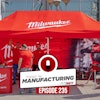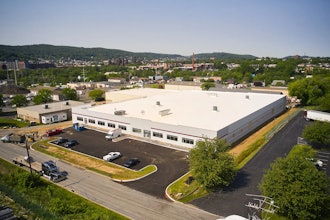At one time, companies implemented environmental management systems largely to reduce their exposure to EPA penalties and/or to increase profitability from a new perspective. In the 1980s, environmental regulations on hazardous waste disposal at both the local and national levels became more stringent. This forced companies to change the method for hazardous-waste disposal from placement in a landfill to treatment and recycling. As a result, the cost for hazardous waste disposal increased dramatically.
This price increase motivated companies to look for ways to reduce waste production as well as disposal costs. Their search resulted in the development of pollution-prevention techniques and company-specific environmental management systems. 3M Corp.'s "Pollution Prevention Pays" program is an excellent example of this trend. This renowned program led to many innovations within 3M, such as using water to apply adhesive to tape instead of potentially hazardous chemicals. Since the program began in 1975, 3M claims to have saved more than $810 million in various environmental costs. The company continues to reduce its air emissions, water discharges and solid waste through the program.
ISO 14001's first steps
Company programs like 3M's were the precursor to today's ISO programs, especially the ISO 14000 and 14001 environmental programs. (See "What is ISO 14001?" on page xx). By 1997, less than one year after the ISO 14001 standard was published, only 17 companies in the U.S. had registered to the standard. They had typically done so for one or more of the following reasons (in no particular order):• The company was proactive and/or socially responsible.
• The parent company set a goal of registering all facilities to the standard.
• An environmental management system was in place that could be easily converted to the framework of the standard.
• The company wanted to gain recognition for their EMS and for their leadership in the industry.
Acushnet Rubber, New Bedford, MA, was an early registrant. The company is a custom molder of rubber and elastomeric products, employs 1,100 people, and has $100 million in annual sales. According to Jack Bailey, the company's environmental systems director, Acushnet became ISO 14001-registered in November 1996 to anticipate customer demand, save money, and to reduce potential compliance issues. The company also correctly expected that its ISO 14001 registration would serve as a marketing tool. As a result, Acushnet obtained more business from its European customers, and it received the EPA's Environmental Merit Award, presented personally by Carol Browner, then-EPA Administrator. Baily has since given approximately 25 presentations showcasing Acushnet Rubber's EMS.
Another early leader is Canon Virginia, Inc. (CVI), a Newport News, VA-based manufacturer of laser printers, copiers and related components. CVI registered to ISO 14001 in early 1997 at the request of its parent corporation. Because CVI previously had an EMS, it was decided that the effects of the ISO 14001 registration would be highlighted rather than blended in with those of the existing system.
The company's Chemical Manufacturing Division, which manufactures and assembles components for laser-printer toner cartridges, was the first to successfully apply this new approach. During ISO 14001's aspect-identification phase, the division identified manufacturing waste as having a significant impact on business, not only due to the excessive depletion of natural resources, but also the added cost of lost production time and defective parts. It was determined that a large portion of this waste was due to equipment maintenance being performed after a problem occurred. A goal was set to emphasize preventive maintenance and reduce reactive maintenance by 50%.
Through training and diligence, the percentage of work orders sent to the maintenance department due to equipment failures on the manufacturing lines decreased from 85% in June 1998 to 28% by December 1998. During this same period, the percentage of work orders for preventive maintenance increased from 2% to 20%. The percentage of work orders for process improvements, an even more important activity, increased from 4% to 35%.
The company's change from reactive to preventive thinking caused an already-low defect rate to drop by more than 60% from the first half to the second half of 1998. It dropped another 10% in the first quarter of 1999. The increase in equipment reliability resulted in a significant reduction of the division's environmental impact, and produced substantial cost savings due to the increased yields.
Ford embraces the standard
ISO 14001 did not gain significant notice among U.S. manufacturers until it was accepted by major manufacturers. When the Ford Motor Co. became the first automaker to certify all of its facilities worldwide to the standard, others took notice. Ford began its ISO 14001 registration process in 1996, and by 1999 had registered all 140 of its facilities in 26 countries. A spokesperson for the company noted at the time that ISO certification "highlights Ford's philosophy that environmental excellence is an element of both good business and corporate citizenship."Among the many environmental achievements Ford has realized due to its ISO 14001 registration, the following stand out:
• Its Michigan-based truck facility reduced water consumption by almost one million gallons per day. The facility also saved $66,000 a year in electricity costs by replacing 1,975 fluorescent bulbs with metal halide bulbs.
• Ford implemented a process to reduce the amount of disposed paint sludge in 10 plants. Since 1995, approximately 17,000 tons of paint waste has been recycled.
• By replacing cardboard and plywood boxes with reusable plastic or metal containers, Ford reduced the quantity of disposable packaging that comes into its plants by 163 million lbs.
Market pressure now drives registration
Market pressure is now the dominant force that drives ISO 14001 registrations in the U.S. This is no surprise considering that many of the 10,000 companies currently registered to ISO 14001 worldwide - including Ford, GM, IBM, Xerox, Honda and DaimlerChrysler - now ask that their suppliers also register to the standard. The cumulative nature of these requests in the U.S. is being felt. By June 1998, for example, there were 93 ISO 14001 registrations in the U.S. By May 1999, there were approximately 235 registrations. As of mid-2001, the number was 1,100.
Even without market pressure, profitability gains offer companies another compelling reason to seek ISO 14001 registration. Since profits commonly represent only 5% to 10 % of sales, even small increases in the bottom line are welcome. "ISO 14001 helped us decrease electricity usage by 26%, gas usage by 24%, and water usage by 21%," says Dave Gaspar, business analyst and ISO management representative for Tytex, Inc., a Woonsocket, RI-based manufacturer of medical textile products. "Production waste was reduced by nearly three percentage points," he adds, "while our recyclable waste collection soared nearly 30%. Production volumes also increased 21%." Gaspar says the ISO 14001-related changes have saved Tytex, Inc., nearly 25% on its total energy and water costs since 1996, and that "the payback on implementing our integrated ISO management systems took only 3.5 years."
Wider ISO recognition is expected
For the foreseeable future, customer demand will be the dominant reason for implementing ISO 14001. Furthering that, government agencies have begun initiatives that encourage companies to adopt environmental management systems. EPA Regions 1, 2, 3, and 7, for example, have initiatives in place to help universities and colleges comply with federal environmental regulations. The EPA has held workshops describing how to set up EMSs and their value. The EPA also started its National Environmental Performance Track program in late 2000 to recognize companies that have high-quality EMSs in place and continually improve. These companies get recognition, an opportunity to exchange information on best practices, reduced environmental reporting requirements, and numerous administrative benefits.Requiring the implementation of an environmental management system or the registration to ISO 14001 is also becoming popular in government-agency settlements. General Motors and the Delaware Department of Natural Resources and Environmental Control (DNREC), for example, recently negotiated an environmental settlement for GM's Wilmington, DE, assembly plant. DNREC reduced a $400,000 proposed fine by half in exchange for GM's agreement to register the plant to ISO 14001.
As ever greater demands are placed on the world's resources, it only makes sense to have a plan in place to use those resources most wisely. ISO 14001 is a proven way to do that and improve business at the same time.
Stanley Fielding is the ISO 14001 business unit manager for National Quality Assurance USA, Inc., an Acton, MA-based quality consulting firm. He can be reached at 800-649-5289 or [email protected].
Sidebar
What is ISO 14001?
Rick Carter, Editor-in-ChiefTo best understand ISO 14001, it helps to place it in context. The standard, currently gaining widespread recognition in the U.S., is part of a large family of ISO manufacturing and business standards. These include ISO 9000, ISO 14000 and more than 13,000 others. All are the result of international agreements, created by representatives from the 140 member nations of the Switzerland-based International Organization for Standardization. This non-governmental group, established in 1947, defines itself as a worldwide federation of national-standards bodies. Its mission is to "promote the development of standardization and related activities in the world with a view to facilitating the international exchange of goods and services."
Interestingly, "ISO" does not correspond to the group's name. ISO, in fact, is not an acronym for the International Organization for Standardization, but is derived from the Greek isos, meaning "equal." According to ISO, the group chose this three-letter designation (actually, the prefix used in such words as "isosceles," "isometric," and others) as a way to figuratively align the concepts of "equality" and "standardization." The group also felt its use would eliminate confusion created by various translations of its full name. "ISO" identifies the same group in all countries.
The ISO 14000 family of standards addresses various aspects of environmental management. The first two standards, ISO 14004 and ISO 14001, released in fall 1996, deal with environmental management systems (EMS). An EMS is a structured approach to setting and achieving environmental objectives, and to demonstrating that they have been achieved. ISO 14004 includes guidelines on the goals of an EMS; ISO 14001 specifies the requirements needed for the success of such an EMS. An EMS based on these standards enables an organization of any size or type to control the impact of its activities, products or services on the environment. Key benefits include:
• reduced cost of waste management
• savings in consumption of energy and materials
• lower distribution costs
• improved corporate image among regulators, customers and the public
• a framework for continuous improvement of an organization's environmental performance
The underlying philosophy is that the requirements of an effective EMS are the same, whatever the business. For this reason, ISO 14000 standards do not include required levels of environmental performance. Instead, they seek to provide a common route to positive environmental actions in the world of commerce.

















